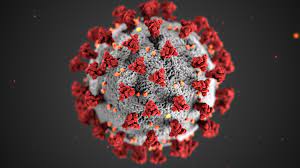In a significant stride towards fortifying the healthcare infrastructure of the nation, the Government has ramped up efforts to increase the number of medical colleges and, consequently, the intake of medical students. The statistics reveal an impressive growth, reflecting the commitment to enhance medical education opportunities and address the healthcare needs of the population.
Before the year 2014, there were 387 medical colleges across the country. Fast forward to the present, and this number has surged by 82%, reaching a total of 706 medical colleges. This expansion is accompanied by remarkable increases in both undergraduate (MBBS) and postgraduate (PG) seats, marking a transformative phase in medical education.
The surge in MBBS seats is particularly noteworthy, witnessing a remarkable 112% rise from 51,348 seats before 2014 to an impressive 1,08,940 seats currently available. Additionally, PG seats have experienced a substantial growth of 127%, escalating from 31,185 seats before 2014 to 70,645 seats at present.
The state-wise and year-wise details of medical colleges approved under the scheme and funds released to these colleges in last three years are as under:
State-wise details of 157 Medical Colleges approved under the Centrally Sponsored scheme for ‘Establishment of new medical colleges attached with existing district/referral hospitals’
| S.No | State/UT | No. of colleges | Districts | ||
| Phase-I (58) | |||||
| 1 | A & N Islands | 1 | Port Blair | ||
| 2 | Arunachal Pradesh | 1 | Naharlagun | ||
| 3 | Assam | 4 | Dhubri, Nagaon, North Lakhimpur, Diphu | ||
| 4 | Bihar | 3 | Purnia, Saran (Chhapara), Samastipur | ||
| 5 | Chhattisgarh | 2 | Rajnandgaon, Sarguja | ||
| 6 | Himachal Pradesh | 3 | Chamba, Hamirpur, Nahan (Sirmour) | ||
| 7 | Haryana | 1 | Bhiwani | ||
| 8 | Jharkhand | 3 | Dumka, Hazaribagh, Palamu (Daltonganj) | ||
| 9 | Jammu & Kashmir | 5 | Anantnag, Baramulla, Rajouri, Doda, Kathua | ||
| 10 | Madhya Pradesh | 7 | Datia, Khandwa, Ratlam, Shahdol, Vidisha, Chindwara, Shivpuri | ||
| 11 | Maharashtra | 1 | Gondia | ||
| 12 | Meghalaya | 1 | West Garo Hills (Tura) | ||
| 13 | Mizoram | 1 | Falkawn | ||
| 14 | Nagaland | 1 | Naga Hospital (Kohima) | ||
| 15 | Odisha | 5 | Balasore, Baripada (Mayurbhanj), Bolangir, Koraput, Puri | ||
| 16 | Punjab | 1 | SAS Nagar | ||
| 17 | Rajasthan | 7 | Barmer, Bharatpur, Bhilwara, Churu, Dungarpur, Pali, Sikar | ||
| 18 | Uttar Pradesh | 5 | Basti, Faizabad, Firozabad, Shahjahanpur, Bahraich | ||
| 19 | Uttarakhand | 1 | Almora | ||
| 20 | West Bengal | 5 | Birbhum (Rampur Hat), Cooch behar, Diamond harbour, Purulia, Raiganj (North Dinajpur) | ||
| Phase –II (24) | |||||
| 1 | Bihar | 5 | Sitamarhi, Jhanjharpur, Siwan, Buxar, Jamui | ||
| 2 | Jharkhand | 2 | Koderma, Chaibasa (Singhbhum) | ||
| 3 | Madhya Pradesh | 1 | Satna | ||
| 4 | Odisha | 1 | Jajpur | ||
| 5 | Rajasthan | 1 | Dholpur | ||
| 6 | Uttar Pradesh | 8 | Etah, Hardoi, Pratapgarh, Fatehpur, Siddharthnagar (Domariyaganj), Deoria, Ghazipur, Mirzapur | ||
| 7 | West Bengal | 5 | Barasat, Uluberia, Arambagh, Jhargram, Tamluk | ||
| 8 | Sikkim | 1 | Gangtok | ||
| Phase-III (75) | |||||
| 1 | Andhra Pradesh | 3 | Piduguralla, Paderu, Machilipatnam | ||
| 2 | Assam | 1 | Kokrajhar | ||
| 3 | Chhattisgarh | 3 | Korba, Mahasamund, Kanker | ||
| 4 | Gujarat | 5 | Narmada, Navsari, Panchmahal, Porbandar, Morbi | ||
| 5 | Jammu & Kashmir | 2 | Udhampur, Handwara (Distt. Kupwara) | ||
| 6 | Karnataka | 4 | Chikkamagaluru, Haveri, Yadgiri, Chikkaballapura | ||
| 7 | Ladakh | 1 | Leh | ||
| 8 | Madhya Pradesh | 6 | Rajgarh, Mandla, Neemuch, Mandsaur, Sheopur, Singrauli | ||
| 9 | Maharashtra | 1 | Nandurbar | ||
| 10 | Manipur | 1 | Churachandpur | ||
| 11 | Nagaland | 1 | Mon | ||
| 12 | Odisha | 1 | Kalahandi | ||
| 13 | Punjab | 2 | Kapurthala, Hoshiarpur | ||
| 14 | Rajasthan | 15 | Alwar, Baran, Bansawara, Chittorgarh, Jaisalmer, Karauli,
Nagaur, Shri Ganganagar, Sirohi, Bundi, SawaiMadhopur, Tonk, Hanumangarh, Jhunjhunu, Dausa |
||
| 15 | Uttarakhand | 3 | Rudrapur (Distt. Udham Singh Nagar), Pithoragarh, Haridwar | ||
| 16 | Uttar Pradesh | 14 | Bijnaur, Kushinagar, Sultanpur, Gonda, Lalitpur, LakhimpurKheri, Chandauli, Bulandshahar, Sonbhadra, Pilibhit, Auraiya, Kanpur Dehat, Kaushambi, Amethi | ||
| 17 | Tamil Nadu | 11 | Tiruppur, Nilgiris, Ramanathapuram, Namakkal, Dindigul,
Virudhunagar, Krishnagiri, Tiruvallur, Nagapattinam, Ariyalur, Kallakurichi |
||
| 18 | West Bengal | 1 | Jalpaiguri | ||
Underpinning this expansion is the Centrally Sponsored Scheme (CSS) for the establishment of new medical colleges, which are attached to existing district or referral hospitals. The scheme emphasizes addressing the healthcare gaps in underserved areas and aspirational districts, where there is a dearth of government or private medical colleges. The funding for this scheme is shared between the Centre and State Governments, with a ratio of 90:10 for North Eastern and Special Category States and 60:40 for others.
This comprehensive initiative has seen the approval of all 157 envisaged medical colleges in three phases, out of which 108 are now fully operational. Complementing this, the Central Sector Scheme for setting up new All India Institutes of Medical Sciences (AIIMS) has also made substantial progress. A total of 22 AIIMS have been approved under this scheme, with undergraduate courses already underway in 19 of them.
In a written reply to the Lok Sabha, the Union Minister of State for Health and Family Welfare, Dr. Bharati Pravin Pawar, highlighted the government’s unwavering commitment to strengthening the medical education landscape. The surge in medical colleges and seats not only addresses the growing demand for healthcare professionals but also aligns with the broader goal of achieving comprehensive and accessible healthcare for all citizens. As the nation continues to invest in medical education, the impact on public health is expected to be profound and enduring.












